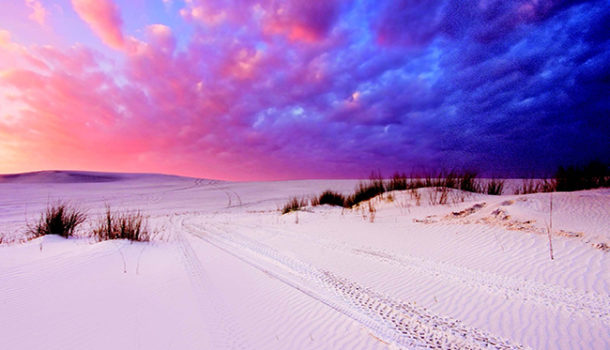How to keep your digital images noise-free. By Jac Kritzinger
Grain, or ‘noise’, as it has been relabelled in the digital era, refers to the degree of fine (and rather unsightly) specks or dots becoming visible in photographs as the light sensitivity setting, ISO, is raised on your camera. Digital systems have come a long way in keeping noise levels acceptable at high ISOs, but if you’re serious about enlargement or making high-quality prints from your travel images, it might be worth considering these low-noise tips.
How low can you go?
The most obvious way to minimise digital noise is to keep the ISO setting on your camera as low as possible. A value of around 200 is normally a safe bet (values on digital systems range from as low as 50 to as high as 25 000). High ISO settings make your camera’s sensor more sensitive to light (giving you much more flexibility in different conditions), but it also results in the amplified pixel sites producing a larger amount of image noise, and a poorer rendition of colour and detail as a result. Low ISOs will result in crisp, clear images, but it will make your camera less sensitive to light, therefore requiring a slower shutter speed and/or larger lens aperture. It’s always a good idea to use a tripod or other external support when shooting at base ISOs to combat image blur at slow shutter speeds; fast glass with large maximum apertures, allowing for more light to hit the sensor, goes hand in hand with shooting at low ISO settings.
Size matters
These days, manufacturers make wild claims about the ‘noise-free’ high-ISO images produced by their new models. High-ISO images may look acceptable when just viewed at regular size on a monitor, but once images are enlarged for printing, that diminished image quality soon becomes apparent. As a rule, larger sensors found in top-end cameras can handle noise at high ISOs much better than their compact cousins – larger sensors contain larger pixel sites; these can automatically gain more light without having to jack up the ISO on the camera. DSLR or CMS cameras outfitted with full-frame (35 mm film equivalent) sensors are pricey, but they deliver distinctly better image quality at high ISOs, resulting in more freedom and confidence for the serious shooter when out in the field.
RAW power
With the technological wizardry present in digital systems today, some cameras may well provide usable images at ISO 20 000, as advertised (this means you’re practically shooting in night-vision; in the film era, an ISO 3 200 option was the fastest available commercial film speed, and seldom used). These modern ISO claims, however, refer to JPEG files viewed straight from the camera–the camera’s on-board software applies very aggressive noise-reduction prior to the image output. This results in less image noise, but also extreme softness, along with a reduction in detail and colour. When forced to shoot at high ISOs, be sure to use the RAW image format. This will enable you to have control over the final appearance of the image 78 through the lens via computer editing software, striking a much better balance between noise reduction, sharpness retention and the rendering of colour, as opposed to the less refined shotgun approach found with JPEG algorithms.
Make some noise
The upside of digital noise is that when it is used carefully and correctly, it can produce some striking effects. Digital systems nowadays produce noise very similar to the fine grain found on film – when used in moderation – from that era; high digital ISOs from a decade ago created some ghastly gremlins. Keeping this in mind, one can create a romantic, sentimental film-type feel with lots of grain by deliberately breaking the rules and shooting at a high ISO when the subject and setting calls for it (adding grain afterwards in software can result in an artificial, digitised look). Keep in mind, though, that this technique will work best in black and white, as high noise and colour reproduction do not go well together. Whether you turn the noise down or up, make sure to get out there, have fun and keep experimenting.
Photography Gallo/Gettyimages
(This article was first published in the autumn 2016 issue of AA traveller magazine)




